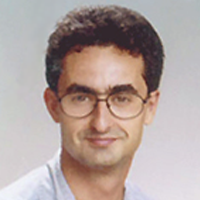
1969 - 2002
Richard Durn
Summary
Name:
Richard DurnYears Active:
2002Birth:
January 06, 1969Status:
DeceasedClass:
Mass MurdererVictims:
8Method:
ShootingDeath:
March 28, 2002Nationality:
France
1969 - 2002
Richard Durn
Summary: Mass Murderer
Name:
Richard DurnStatus:
DeceasedVictims:
8Method:
ShootingNationality:
FranceBirth:
January 06, 1969Death:
March 28, 2002Years Active:
2002bio
Richard Durn was born on January 6, 1969, in Nanterre, France. He grew up in a modest household, raised primarily by his mother, a Slovenian immigrant who had fled her country in 1958 to escape the Soviet regime. Durn never knew his biological father and was raised alongside his half-sister. His upbringing was marked by feelings of abandonment and identity struggles.
Academically, Durn was intelligent and achieved a master's degree in political science and a bachelor's degree in history. Despite his educational accomplishments, he struggled to find stable employment and lived with his mother into adulthood. He was known to be socially isolated, with few close relationships, and had a history of mental health issues, including depression and suicidal tendencies. He had attempted suicide multiple times and had been under psychiatric care since the age of 15.
Politically active, Durn was involved with the Human Rights League and had participated in humanitarian missions to Bosnia and Kosovo. He was also associated with the Green Party and had previously been a member of the Socialist Party. Despite his activism, he became increasingly disillusioned with politics, expressing disdain for politicians whom he viewed as corrupt and hypocritical. He attended municipal council meetings regularly and was known to express his frustrations openly.
In the months leading up to the massacre, Durn's mental health deteriorated further. He became obsessed with a book titled "Je vous hais" ("I Hate You"), which depicted a protagonist who felt like society's waste and sought violent retribution. Durn identified strongly with this character, even giving the book to a friend and expressing similar sentiments. He also acquired firearms legally through a shooting club, despite his psychiatric history.
murder story
In the early hours of March 27, 2002, during a town council meeting at the Hôtel de Ville in Nanterre, Richard Durn carried out a meticulously planned attack. At approximately 1:11 a.m., after a six-hour meeting had concluded, Durn stood up from the public gallery, drew two semi-automatic pistols—a Glock 17 and a Glock 19—and began firing indiscriminately at the council members. He also had a .357 Magnum revolver, which he did not use.
The shooting lasted approximately 55 seconds, during which Durn fired 38 rounds, aiming at the heads and chests of his victims. Eight council members were killed, and nineteen others were injured, fourteen of them critically. The victims included both men and women, some of whom had young children. Among the deceased were:
Louisa Benakli (40): Deputy in charge of childhood affairs.
Christian Bouthier (46): History teacher and municipal councilor.
Jacotte Duplenne (48): Deputy in charge of youth and secondary education.
Monique Leroy-Sauter: Municipal councilor.
Olivier Mazzotti: Municipal councilor.
Valérie Meot: Municipal councilor.
Michel Raoult: Municipal councilor.
Pascal Sternberg: Regional councilor of Île-de-France and municipal councilor.
Durn was eventually subdued by several council members and a municipal employee. As he was being restrained, he repeatedly shouted, "Kill me! Kill me!" He was arrested and taken into custody.
During police interrogation at the Paris police headquarters, Durn confessed to the shootings, stating that he had planned the attack for weeks. He expressed a desire to die and indicated that he wanted to end his life in a way that would make him feel significant. On March 28, while being questioned, Durn suddenly leaped from a fourth-floor window, dying instantly upon impact.
The massacre shocked France and led to national debates on mental health, gun control, and political violence. It also had political ramifications, occurring just weeks before the presidential election, and prompted discussions on the security of public officials and the accessibility of firearms to individuals with known psychiatric issues.